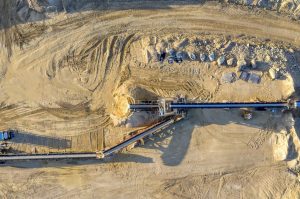When it comes to planning an excavation project, it’s imperative to choose the right method based on factors such as safety, cost-effectiveness, and environmental impact. With vacuum excavation becoming an increasingly popular choice in Perth, it’s crucial to understand how it stacks up against traditional excavation methods.
In this article, we’ll provide an in-depth analysis of both vacuum excavation and traditional excavation techniques so you can weigh the pros and cons of each method and determine which one is best suited for your specific project needs. We’ll examine various factors such as safety, efficiency, environmental impact, and versatility to give you a well-rounded understanding of what each technique has to offer.
So, if you’re keen on diving deep into the world of excavation methods, stay right where you are. By the end of this read, you’ll have a clear understanding of which excavation technique aligns best with your project requirements.
Vacuum Excavation: Key Features and Benefits
Before we dive into the comparison, let’s briefly recap the main elements of vacuum excavation. This innovative method employs a combination of high-pressure air or water jets to break up the soil, while a powerful vacuum system collects the debris. This non-destructive digging technique has gained popularity due to its myriad of benefits.
Safety and Precision
Vacuum excavation significantly reduces the likelihood of accidentally hitting underground utilities, as its precise nature allows for accurate digging around sensitive infrastructure. This minimises disruptions, costly repairs, and potential hazards that can arise from striking buried cables, pipes, or other utilities. Additionally, the risk of injury to workers is reduced, as there’s less reliance on heavy machinery when using vacuum excavation.
Time and Cost Efficiency
Offering improved speed and efficiency, vacuum excavation helps streamline excavation projects. With its focus on precision, less material is removed and reinstated, meaning fewer costs and disruption to the surrounding area. Its non-destructive nature also decreases the risk of inadvertent damages, dodging expensive repairs and extended project timelines.
Environmentally Friendly
Vacuum excavation is considered more environmentally sustainable than traditional methods. It uses less fuel and produces fewer emissions, while its precise nature reduces the environmental impact of a project. Moreover, minimal disturbance to surrounding vegetation and soil structures is guaranteed, better preserving the natural environment.
Traditional Excavation Methods: Main Features and Drawbacks
Traditional excavation relies on machinery like backhoes, shovels, or bulldozers to remove soil and earth. While these methods have been used for decades, they come with several disadvantages when compared to vacuum excavation.
Increased Risk of Utility Damage
With traditional excavation methods, there’s a higher risk of accidentally damaging buried utilities. These damages lead to costly repairs, delays, and potential safety hazards. According to a study by the Australian Centre for Infrastructure and Damage Prevention, utility strikes contribute to an estimated $50 million in damages annually in Australia.
Worker Safety Concerns
Using heavy machinery in excavation projects can pose increased risks to worker safety. Accidents can occur from operating these machines, and workers may be exposed to noise and vibration levels that can cause hearing damage or repetitive strain injuries.
Environmental Impact
Traditional excavation methods are known for their negative environmental impact. They involve more fuel consumption and emissions than vacuum excavation, and they can cause significant damage to vegetation, soil structures, and ecosystems. Additionally, traditional excavation often leads to greater material waste and heavier site disturbance.
Comparing the Techniques Based on Critical Factors
To help you make an informed decision, let’s assess how vacuum excavation and traditional excavation methods fare when considering critical project factors.
Safety
When it comes to safety, vacuum excavation is the clear winner. Its accuracy in avoiding utility strikes and decreased reliance on heavy machinery significantly reduces potential risks to both workers and infrastructure. Traditional methods can’t match the precision of vacuum excavation and, consequently, pose a higher risk of accidents.
Efficiency
Vacuum excavation proves more efficient, requiring less time to complete a project due to its precise nature. Traditional methods typically demand more groundwork and involve a more extensive material removal process. The non-destructive nature of vacuum excavation also means reduced repair costs and project delays.
Versatility
Both techniques have specific use cases where they excel. Vacuum excavation is ideal for projects requiring precise digging around utilities, while traditional methods might still have a place in some large-scale, open-area excavations. However, it’s worth considering how the benefits of vacuum excavation—particularly its safety and environmental advantages—make it a more versatile option overall.
Environmental Impact
Vacuum excavation is the better choice when considering environmental impact. Its reduced fuel consumption, emissions, and minimised site disturbance all contribute to a more sustainable excavation project. Traditional methods, by contrast, leave a considerably heavier footprint on the environment.
Catering to Different Industry Needs
Various industries can benefit from vacuum excavation thanks to its numerous advantages. Construction, utilities, landscaping, and mining are just a few examples of sectors where vacuum excavation proves to be a valuable asset.
In contrast, traditional methods might still be viable for large-scale, open-area projects where worker safety and environmental factors aren’t as critical. However, for most project scenarios in Perth, vacuum excavation is increasingly becoming the preferred choice due to its overwhelming list of benefits.
In conclusion, vacuum excavation stands out as the superior method when compared to traditional excavation techniques, especially in terms of safety, efficiency, versatility, and environmental friendliness. While there might still be instances where traditional methods are applicable, for the majority of excavation projects in Perth, vacuum excavation proves to be the smarter and more efficient choice.
Make the Smart Choice for Your Excavation Project
Vacuum excavation has proven to be the superior method when compared to traditional excavation techniques. With its numerous benefits in safety, efficiency, versatility, and environmental friendliness, it has become increasingly popular for various industries and projects in Perth. While there are instances where traditional methods might still be a viable option, vacuum excavation addresses today’s growing concerns for safety and eco-friendliness, making it the smarter choice for most excavation projects.
Are you ready to experience the advantages of vacuum excavation for your next project in Perth? iVAC Australia’s team of experts is here to guide you through the process and provide tailored vacuum excavation services based on your specific project requirements. Visit our website or give us a call to learn more about how we can help you make the best choice for your excavation needs.

